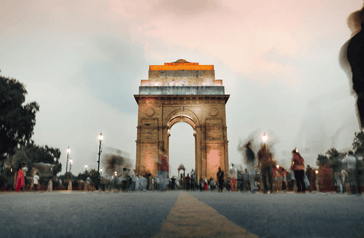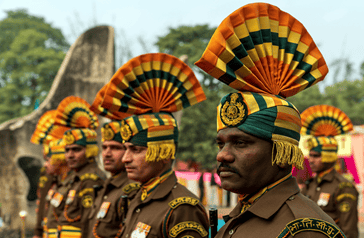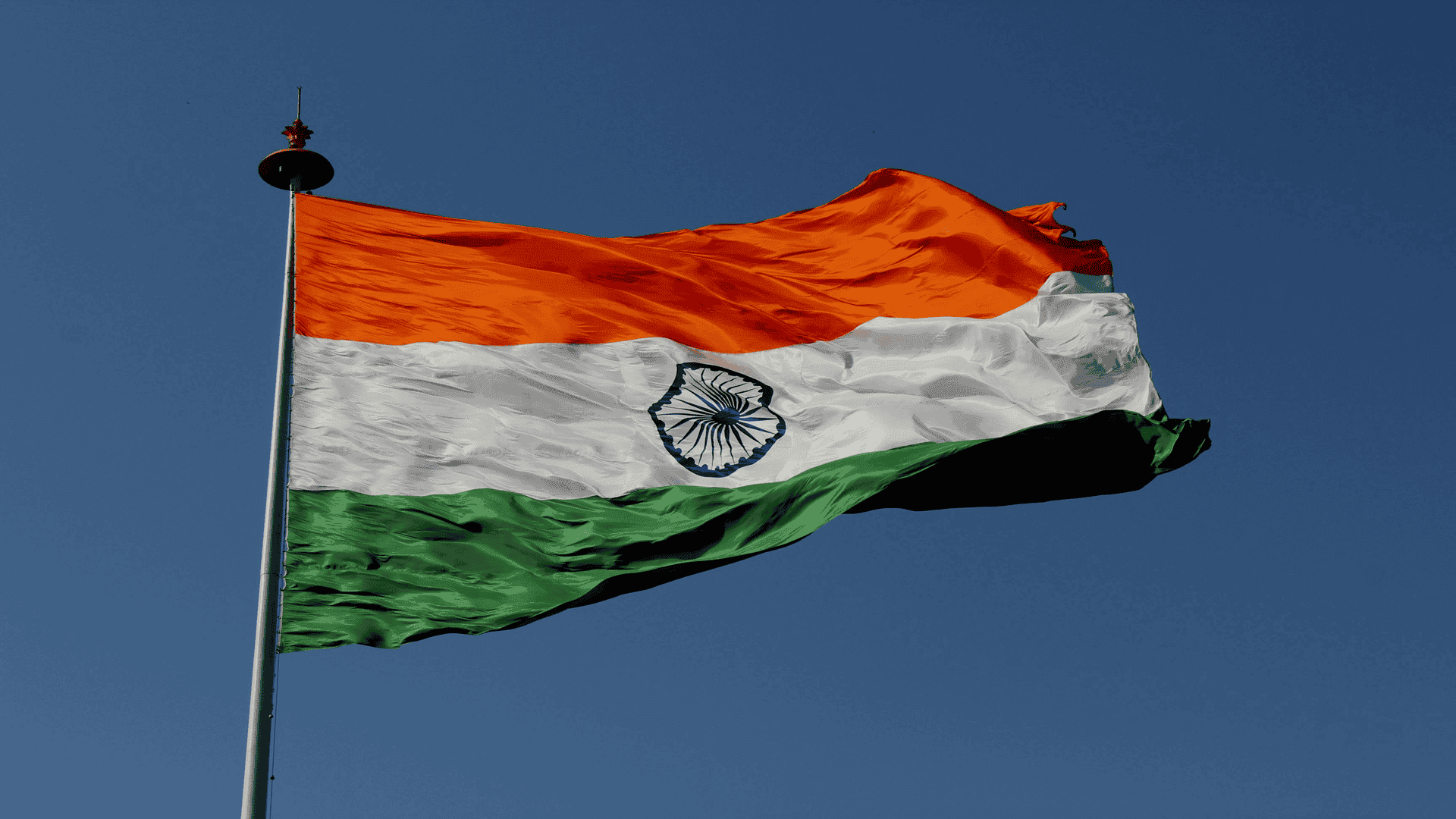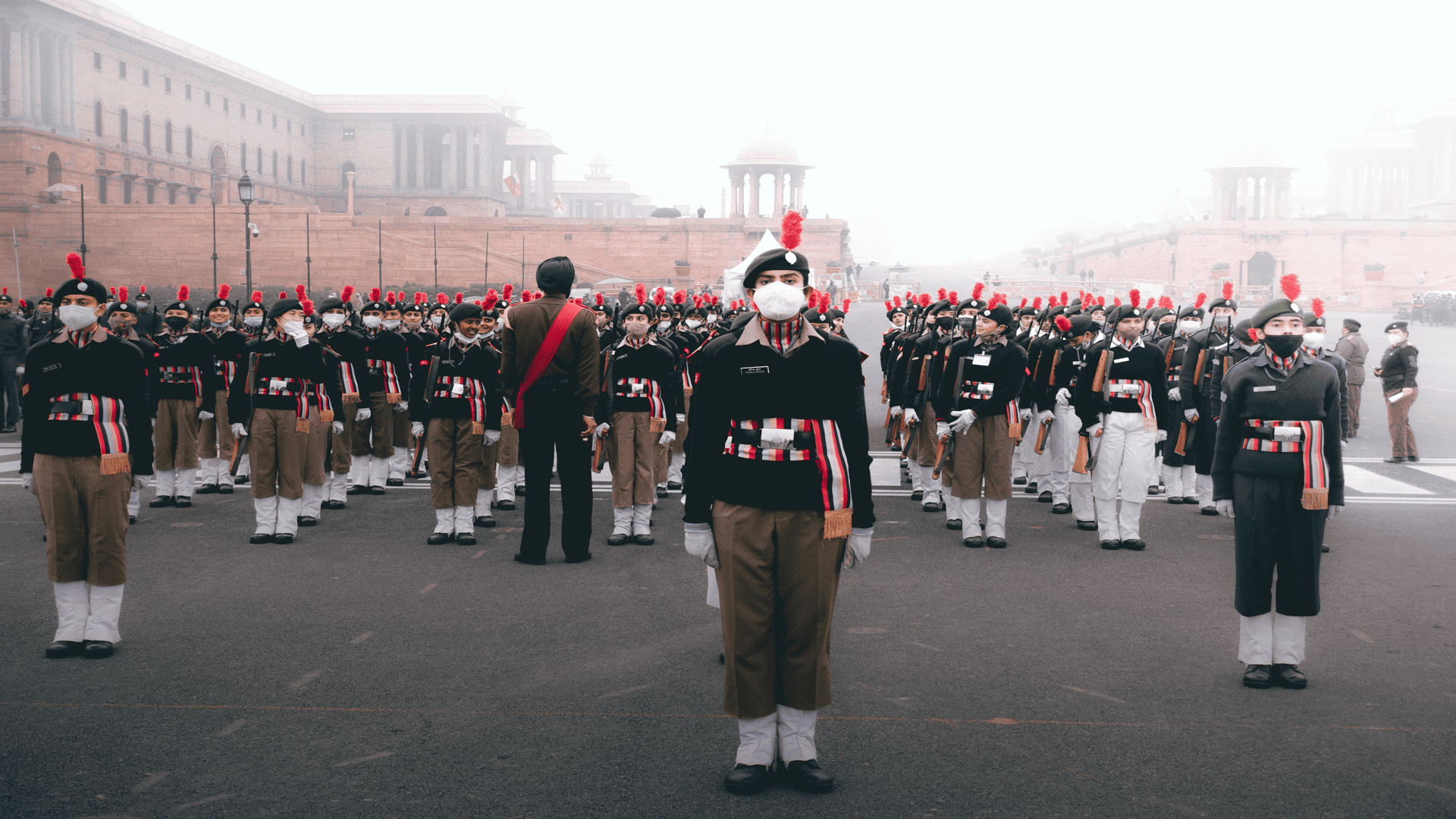Indian Army Regiments, Their War Cries & Mottos Part 2
In this article
In the first part of this series, we explored the origins, mottos, and war cries of some of the Indian Army’s oldest regiments. But the story of valour doesn’t end there. The remaining regiments from the Grenadiers to the Territorial Army, each bring their own legacy, culture, and unmatched contributions to India’s military history.
These regiments represent every corner of India, from the Himalayan foothills to the southern plateaus. Their war cries echo faith, courage, and brotherhood, while their mottos capture timeless values of discipline, duty, and sacrifice. Whether it is the fearless Gorkhas, the spirited Marathas, the elite Parachute Regiment, or the culturally rooted Naga Regiment. Each unit has carved a unique identity in the annals of war.
Part 2 of this series takes you through Regiments 15 to 27, unravelling their history, achievements, mottos, and war cries. It is a journey into the spirit of soldiers who embody both regional pride and national unity, proving time and again that the Indian Army is not just a fighting force, but a living legacy of India’s strength.
Read More: Indian Army Regiments, War Cries & Motto: Part 1
15. The Grenadiers
History:
The Grenadiers is one of the most battle-hardened regiments of the Indian Army, formally established in 1779. It is unique because it was the first regiment to be raised from select companies of men chosen for their courage and strength. Over time, it has built a formidable reputation for bravery in both World Wars and independent India’s conflicts.
Contributions & Achievements:
- Played a major role in the Indo-Pak Wars of 1947, 1965, and 1971, earning multiple battle honours.
- The regiment has produced India’s first Param Vir Chakra awardee, Major Somnath Sharma, for his heroic sacrifice in the 1947 Kashmir war.
- Fought with distinction in the Battle of Asal Uttar (1965) and Battle of Basantar (1971).
- Continues to serve on high-altitude posts in Siachen and in counter-insurgency operations.
Motto:
“Sarvada Shaktishali” (Always Powerful)
War Cry:
“Sarvada Shaktishali” (Always Powerful)
Unique Strength (USP):
The Grenadiers are synonymous with raw courage and indomitable spirit. Their tradition of selecting the toughest soldiers laid the foundation for their reputation as shock troops who can turn the tide in the fiercest battles.
16. Bombay Engineer Group (Bombay Sappers)
History:
The Bombay Engineer Group, better known as the Bombay Sappers, is one of the oldest regiments of the Indian Army, with origins going back to 1780 under the Bombay Presidency. Based in Khadki near Pune, the regiment has seen action in almost every major conflict from colonial wars to modern-day operations, making it one of India’s most decorated engineering units.
Contributions & Achievements:
The Sappers have a reputation for being the Army’s problem-solvers on the battlefield. Whether it was building bridges under fire during the World Wars, clearing mines in the 1971 war, or providing engineering support in the Kargil conflict, they have always been at the forefront. They have also played a major role in peacekeeping missions abroad and disaster relief operations at home. Over the years, Bombay Sappers have earned some of the highest gallantry awards, a testament to their courage and technical expertise.
Motto:
“Sarvatra” (Everywhere) — a reflection of their ability to adapt and deliver in every terrain, from mountains and deserts to river crossings and urban warfare.
War Cry:
Unlike most infantry regiments, the Sappers are not known for a traditional battle shout. Instead, their motto “Sarvatra” itself serves as a call to action, uniting them with a spirit of resilience and readiness in any theatre of war.
Unique Strengths (USP):
What makes the Bombay Sappers unique is their dual identity: warriors and engineers. They are trained to fight like infantry when needed, but their true expertise lies in building mobility for the Army — constructing bridges, fortifications, and demolitions under extreme conditions. Their contribution is not just in war but also in nation-building, with major roles in infrastructure development, rescue operations, and humanitarian aid.
17. 11 Gorkha Rifles
History:
The 11 Gorkha Rifles was raised after the independence of India in 1948, drawing soldiers from Gorkha communities in India and Nepal. Despite being one of the youngest regiments, it has quickly built a formidable reputation.
Contributions & Achievements:
The regiment gained fame in the Kargil War (1999) where its soldiers, including Captain Manoj Kumar Pandey (PVC), displayed unmatched bravery. It also contributed to counter-insurgency operations in the Northeast and J&K.
Motto:
Yatraham Vijayastatra (Where I Am, There is Victory)
War Cry:
Jai Mahakali, Ayo Gorkhali!
USPs:
- One of the youngest regiments with one of the bravest legacies.
- Known for Kargil heroics and gallantry awards.
- Excellent in mountain warfare and counter-insurgency.
18. 3 Gorkha Rifles
History:
Raised in 1815 after the Anglo-Nepalese War, the 3 Gorkha Rifles has a long association with the hill warriors of Nepal. It became part of the Indian Army after independence in 1947.
Contributions & Achievements:
It served with distinction in both World Wars and post-independence conflicts, including the 1962 Sino-Indian War and Indo-Pak wars.
Motto:
Kayar Hunu Bhanda Marnu Ramro (Better to Die than Live Like a Coward)
War Cry:
Jai Mahakali, Ayo Gorkhali!
USPs:
- One of the oldest Gorkha regiments with 200+ years of history.
- Soldiers highly respected for loyalty and courage.
- Masters of high-altitude warfare.
19. 4 Gorkha Rifles
History:
Raised in 1857 during the First War of Independence, the 4 Gorkha Rifles was integrated into the Indian Army post-1947.
Contributions & Achievements:
The regiment fought in both World Wars, the 1947–48 Kashmir War, and the 1971 Bangladesh Liberation War.
Motto:
Kayar Hunu Bhanda Marnu Ramro
War Cry:
Jai Mahakali, Ayo Gorkhali!
USPs:
- Known for its discipline and valour across multiple wars.
- Participated in United Nations peacekeeping missions.
- Famous for enduring loyalty to the Indian Army.
20. 5 Gorkha Rifles (Frontier Force)
History:
Established in 1858, the 5 Gorkha Rifles is nicknamed the Frontier Force due to its deployment in North-West Frontier Province during British rule.
Contributions & Achievements:
It has seen action in nearly every major conflict, from World Wars to post-independence wars. It has earned multiple gallantry awards, including Param Vir Chakra recipients during the 1971 war.
Motto:
Kayar Hunu Bhanda Marnu Ramro
War Cry:
Jai Mahakali, Ayo Gorkhali!
USPs:
- Holds the highest number of battle honours among Gorkha regiments.
- Produced multiple PVC and MVC awardees.
- Reputation for being fearless in face-to-face combat.
21. 8 Gorkha Rifles
History:
Raised in 1824, the 8 Gorkha Rifles is one of the most respected regiments with a proud lineage of bravery.
Contributions & Achievements:
It fought in both World Wars, the 1962 China War, and all Indo-Pak wars. The regiment is remembered for the heroic role of Rifleman Sanjay Kumar (PVC) in Kargil.
Motto:
Kayar Hunu Bhanda Marnu Ramro
War Cry:
Jai Mahakali, Ayo Gorkhali!
USPs:
- Famous for Kargil bravery and gallantry awards.
- Specialises in mountain warfare.
- Trusted for missions demanding endurance and courage.
22. 9 Gorkha Rifles
History:
Founded in 1817, the 9 Gorkha Rifles is one of the oldest Gorkha regiments. It transitioned into the Indian Army after 1947.
Contributions & Achievements:
It fought in both World Wars, the 1947 Kashmir conflict, and the 1971 war.
Motto:
Kayar Hunu Bhanda Marnu Ramro
War Cry:
Jai Mahakali, Ayo Gorkhali!
USPs:
- Oldest Gorkha unit with a strong heritage.
- Played a major role in the 1947–48 Kashmir War.
- Symbol of loyalty and unmatched courage.
23. Ladakh Scouts
History:
Raised in 1963, after the 1962 Sino-Indian War, the Ladakh Scouts were formed with soldiers from Ladakh, adept at surviving extreme high-altitude conditions.
Contributions & Achievements:
The regiment gained fame during the Kargil War (1999) for its unmatched high-altitude combat skills. Its soldiers earned many gallantry awards.
Motto:
Kiari Khor (Victory is Ours)
War Cry:
Kiari Khor
USPs:
- Specialists in high-altitude and glacial warfare.
- Known as the “Snow Warriors” of the Indian Army.
- Trusted for Siachen and Ladakh operations.
Read More: Learn All About the Ladakh Scouts
24. Naga Regiment
History:
Formed in 1970, the Naga Regiment represents the tribes of Nagaland and the Northeastern region of India.
Contributions & Achievements:
It has performed excellently in counter-insurgency operations in the Northeast and Jammu and Kashmir, and contributed to the Kargil War.
Motto:
Parakramo Vijayate (Valour Triumphs)
War Cry:
Jai Durga Naga!
USPs:
- Young but ferocious regiment.
- Skilled in unconventional and jungle warfare.
- Pride of Northeast India.
25. Mechanised Infantry Regiment
History:
Raised in 1979, it is one of the youngest regiments created to modernise the Indian Army with mechanised warfare capabilities.
Contributions & Achievements:
It has participated in major operations like Operation Pawan (Sri Lanka) and Operation Vijay (Kargil).
Motto:
Valour and Faith
War Cry:
Bolo Bharat Mata Ki Jai!
USPs:
- Equipped with armoured personnel carriers and modern weapons.
- Known for mobility and rapid deployment.
- Plays a key role in India’s modern battlefield strategy.
26. Parachute Regiment
History:
Raised in 1945, the Parachute Regiment includes elite Parachute (Special Forces) battalions.
Contributions & Achievements:
They are India’s premier strike force, deployed in counter-terrorism, cross-border, and high-risk missions. Notable operations include Operation Meghdoot, Operation Cactus, and anti-terror ops in Kashmir.
Motto:
Shatrujeet (The Conqueror)
War Cry:
Balidan! (Sacrifice)
USPs:
- India’s elite airborne and special forces unit.
- Handles high-risk, secret, and surgical missions.
- Globally respected for discipline and professionalism.
27. Brigade of the Guards
History:
Established in 1949, this was the first “all-India, all-class” regiment, breaking away from traditional caste- and region-based recruitment.
Contributions & Achievements:
It has participated in all post-independence wars, excelling in tank and infantry assaults.
Motto:
Pahla Hamesha Pahla (First Always First)
War Cry:
Garud ka Hun Bol Pyare!
USPs:
- First all-class regiment, symbolising unity in diversity.
- Combines armoured and infantry strength.
- Known for versatility on the battlefield.
Honouring the Spirit of India’s Regiments
The Indian Army’s regiments are more than military units—they are living legacies of courage, discipline, and unwavering patriotism. From the mountainous terrains guarded by Ladakh and Arunachal Scouts to the engineering marvels of the Bombay Sappers, every regiment brings its own strength, motto, and heritage to the force. Their war cries echo not just on battlefields but in the hearts of every Indian, reminding us of the sacrifices that keep our nation secure.
As we salute these regiments, let’s remember that their traditions and values are what make the Indian Army one of the most respected forces in the world.
Related Articles

Life as a defence brat in India is unlike any other. Shaped by cantonment culture, discipline, adaptability, and resilience, every fauji kid carries unforgettable experiences and traits that set them apart.
Key Highlights
- Punctuality is your default mode. Time is sacred in a defence household.
- Answering “Where are you from?” is tricky. Home is everywhere and nowhere.
- You adapt like a pro; new schools, new cities, no problem.
- Cantonment culture is your comfort zone: canteens, mess halls, and parade grounds feel like home.
- Resilience is second nature. Goodbyes, relocations, and change are part of your DNA.

Part 1 explores the first 14 regiments of the Indian Army — their origins, mottos, war cries, and achievements. From the Madras Regiment to the Sikh Light Infantry, each carries a legacy of unmatched courage.
Key Highlights
- The Madras Regiment traces its roots to 1758, making it one of the oldest regiments in the Indian Army.
- The Rajput Regiment’s war cry “Bol Bajrang Bali ki Jai” echoes through some of the fiercest battlefields in history.
- The Sikh Regiment has the distinction of being the most decorated regiment of the Indian Army.
- The Gorkha Rifles’ fearless cry “Jai Mahakali, Ayo Gorkhali” has struck fear in enemies for centuries.
- Discover how regiments like the Dogras, Jats, and Garhwalis earned their legendary reputations in war.
Frequent Asked Questions
Related Post

Life as a defence brat in India is unlike any other. Shaped by cantonment culture, discipline, adaptability, and resilience, every fauji kid carries unforgettable experiences and traits that set them apart.
Key Highlights
- Punctuality is your default mode. Time is sacred in a defence household.
- Answering “Where are you from?” is tricky. Home is everywhere and nowhere.
- You adapt like a pro; new schools, new cities, no problem.
- Cantonment culture is your comfort zone: canteens, mess halls, and parade grounds feel like home.
- Resilience is second nature. Goodbyes, relocations, and change are part of your DNA.

Part 1 explores the first 14 regiments of the Indian Army — their origins, mottos, war cries, and achievements. From the Madras Regiment to the Sikh Light Infantry, each carries a legacy of unmatched courage.
Key Highlights
- The Madras Regiment traces its roots to 1758, making it one of the oldest regiments in the Indian Army.
- The Rajput Regiment’s war cry “Bol Bajrang Bali ki Jai” echoes through some of the fiercest battlefields in history.
- The Sikh Regiment has the distinction of being the most decorated regiment of the Indian Army.
- The Gorkha Rifles’ fearless cry “Jai Mahakali, Ayo Gorkhali” has struck fear in enemies for centuries.
- Discover how regiments like the Dogras, Jats, and Garhwalis earned their legendary reputations in war.

National Flag Day is observed on 22 July every year to mark the adoption of the Indian National Flag in 1947. The Tiranga is not just a piece of cloth. It is a living symbol of India’s unity, heritage and aspirations. This day reminds every citizen of the values and history stitched into its tricolour threads.
Key Highlights:
- National Flag Day is observed on 22nd July to commemorate the adoption of the Indian National Flag in 1947.
- The current tricolour design was proposed by Pingali Venkayya and officially adopted by the Constituent Assembly.
- The three colours – saffron, white, and green – carry deep symbolic meaning for the nation.
- The Ashoka Chakra represents the eternal wheel of law and progress.
- Several lesser-known facts surround the flag’s evolution and historical significance.








